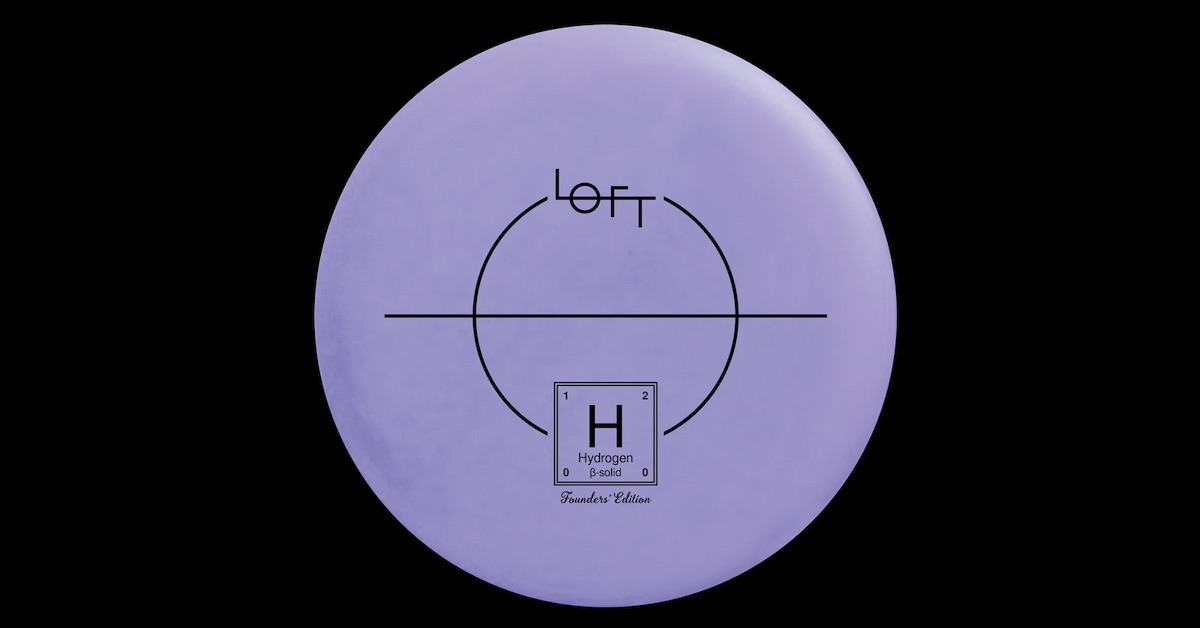
It's a question that could illicit either a disc physics lesson or an eye roll. It's a question every disc golf store owner has to have a ready answer for. It's a question that you, as a disc golfer, have almost certainly asked.
That question is, of course, "What disc flies straight?".
Generally, the answer to that is a complicated one as how straight a disc flies depends greatly on the quality of your throwing technique, wind, and other factors. But one upstart Danish disc company is trying to change that. They hope that in the future when players ask, "What disc flies straight?", the default answer will be "Løft's Hydrogen putter."
Løft's founders Niels Sørensen and Asger Sandahl have developed a flight simulator that they say makes it possible for them to see how making slight changes to a disc's mold would allow it to fly in real life under a wide variety of conditions. Using this simulator, they created the Hydrogen putter, which they've dubbed "the straightest putter in disc golf."
If you want to try the disc for yourself, though, you can't just go to any online retail shop or to your local disc golf store. It has yet to be mass produced as the company is funding the initial run of Hydrogen putters with a Kickstarter campaign. So far, the campaign – which had a base goal of €5,000/around $6,000 USD – has raised nearly €175,000/$210,000 USD, making it the most successful disc golf campaign ever on Kickstarter. That total blows away the previous champion, the campaign to fund BIRDIE!, a disc golf board game.
We spoke with the Danes behind Løft to learn all about their new venture and how they acquired the skills to make it possible. Below you'll find the highlights of our interview with Sørensen and Sandahl edited for clarity and length.
Origin Story, or the Search for a Speed One Putter
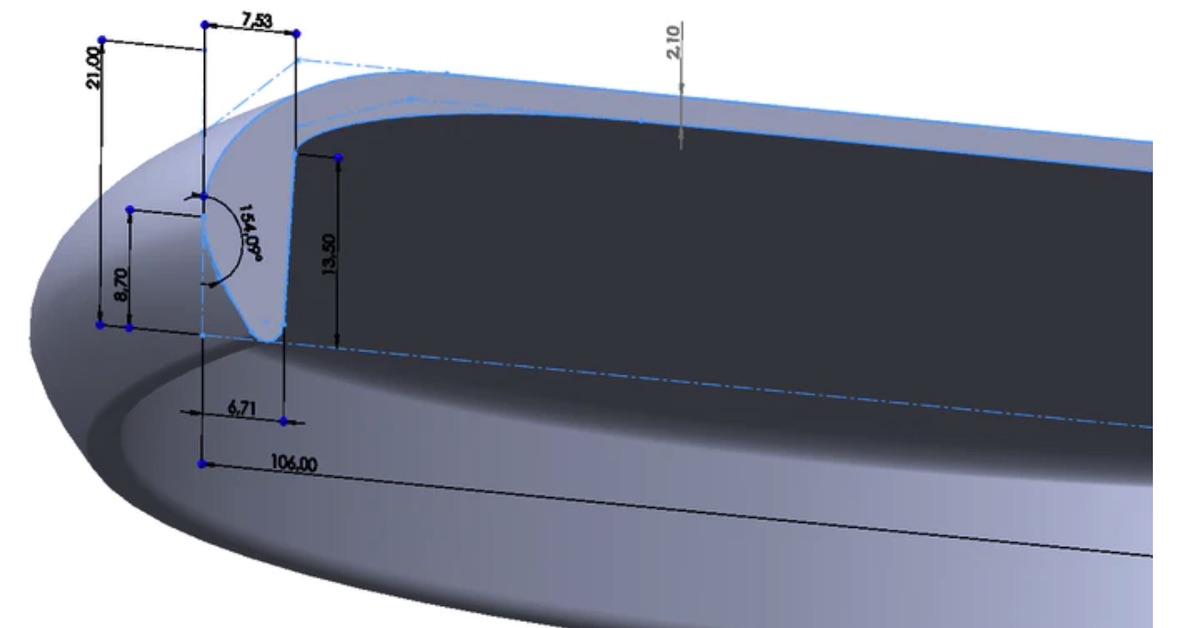
UDisc: How did the idea to create a straight putter first come about?
Sørensen: The disc itself was Asger's idea. He asked me about a year ago, "Why do you use a speed three putter? Why not a lower speed because a lower speed will turn and fade less?" Isn't that what you asked, Asger?
Sandahl: Yeah. From the beginning I was putting with a speed two putter while a lot of my friends were putting with speed three. And my reasoning was that it wouldn't go as far from the basket if you miss. I actually started researching speed one putters, but there wasn't a lot out there, and most of what I found was a bit...[pause]
Sørensen: Weirdly shaped?
Sandahl: Yeah [laughing] a bit weird.
Sørensen: There is the Berg from Kastaplast, but it's a bit more overstable. The Innova Birdie and the Polecat are probably the closest to the idea we had but they are a little strange in the hand, at least to me. But, anyway, not long after that I started a final bachelor's project where I began creating a disc flight simulator and both of us forgot everything about Asger's question. Then Asger helped me on some of the math to finish the simulator, and he said, "We should use this! It's a really good tool for designing discs." Then, at the very end of my bachelor's project, we made up our minds to start this company.
UDisc: And how long did that process take?
Sandahl: He was developing the program back in February and we decided to start the company, I think, in May.
Sørensen: And then Asger remembered the idea about the low speed putter and we went back and forth, asking, "Is it a good idea to start out with a putter? Is that sensational enough?" But it was our best idea and we thought it stood out enough from the other putters in the market that we went with it.
What Creates a Straight Putter?
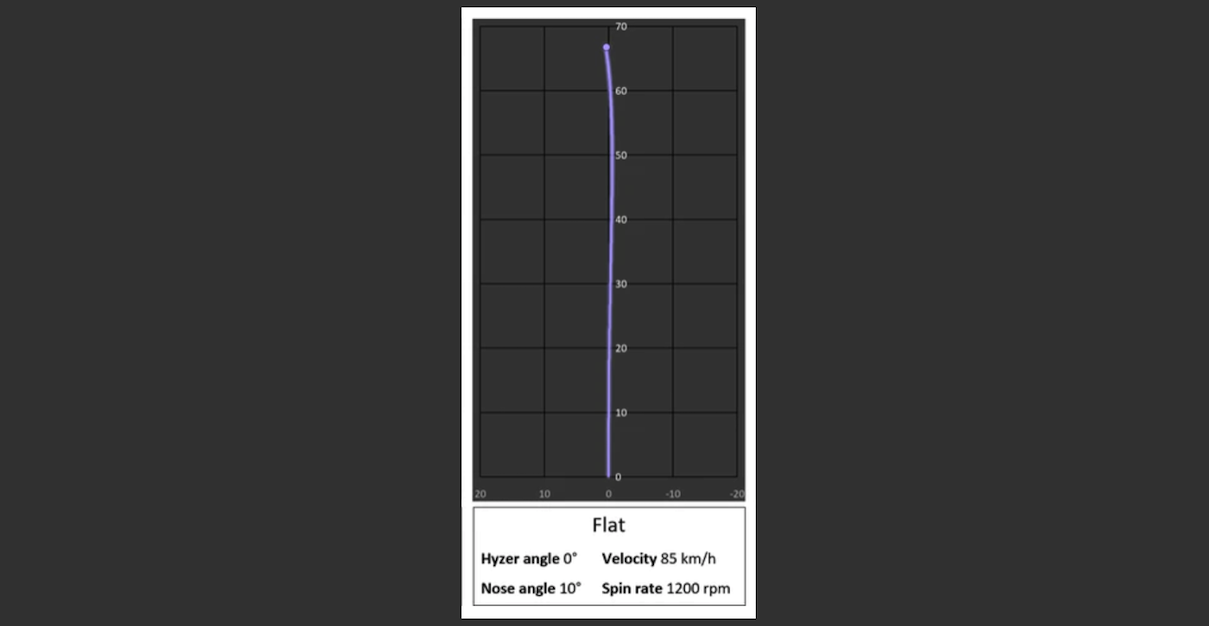
UDisc: The "straight disc" is something almost every player has asked for. What's stopped other manufacturers from creating it?
Sandahl: They actually have to some extent. For example, the Birdie and Polecat can be made to fly extremely straight...but our disc just has such little turn and fade compared to those that it will really hold any line, especially when thrown at a pretty standard upshot speed.
Sørensen: I think it could be that it's just not a very common disc, the slow, straight-flying putter. But I think it should be. For example, I used to throw backhand approaches and putt with the Latitude 64 Pure. And when I threw it hard, it flipped over, but when I tried an anhyzer jump putt, it faded out if it was a little nose up. But our disc holds the angle on a hyzer throw and an anhyzer putt.
UDisc: And why does making a disc speed one help make that possible?
Sandahl: If you increase the lift-to-drag ratio of the disc, you also increase the pitch moment, which results in turn and fade. This is getting a bit nerdy, but, basically, when you increase the speed, you increase turn and fade.
Sørensen: And to counteract that you'd have to change other parameters like you can do with overmold discs where you can have a heavier material on the outer rim and a lighter flight plate. That's one way to do it, but that has some downsides, too.
Sandahl: Alternatively, just making a thinner flight plate [like the Hydrogen has] also works.
About That Flight Simulator
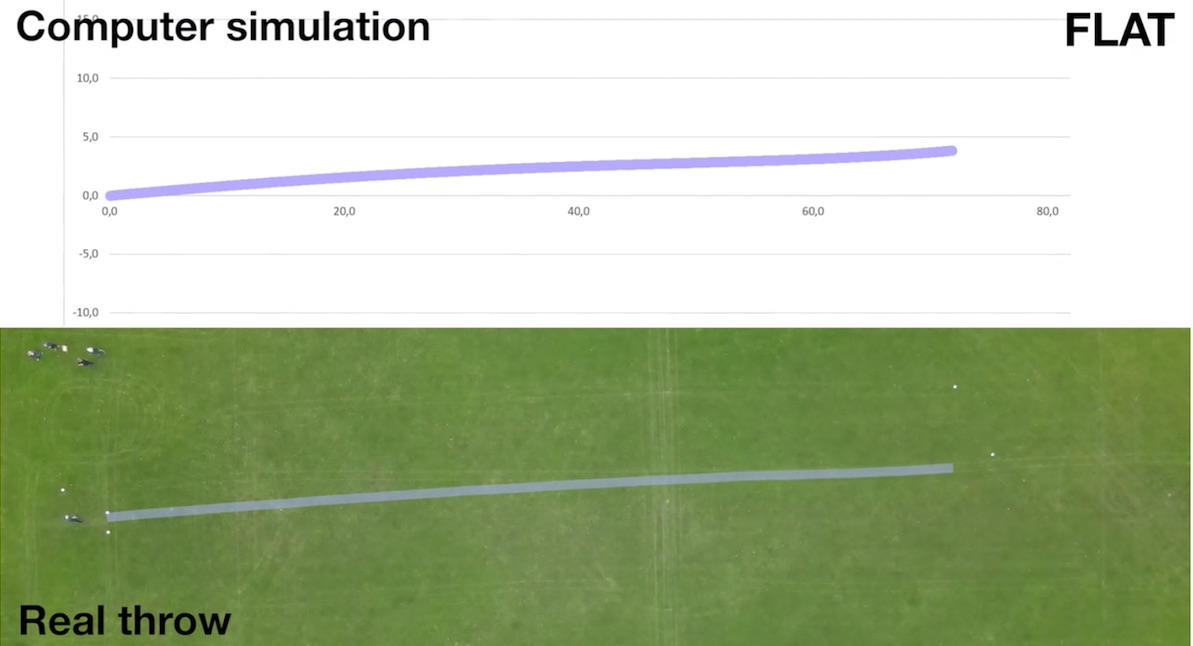
UDisc: Where'd you get the skills in math and developing required to create a flight simulator?
Sandahl: Well, Niels has a lot of knowledge about physical forces in aerodynamics, and I have a lot of experience in modelling from studying economics. What I learned there is pretty useful both in terms of programming and how you set up an iterative model.
Sørensen: And when we both started playing about five years ago, we thought the discs had magic properties and there was no way you could tell how one was going to fly. But the more we looked at them and the better we got at throwing, we were able to make some assumptions about things you could change to make a disc fly differently. Then, once I got further in my mechanical engineering degree, I took some more courses in aerodynamics, and that sparked my interest in this even more and made me want to create tools to develop more knowledge about disc design.
UDisc: How many hours of work did it take to create the simulator?
Sørensen: In the thousands, for sure. I spent nearly two-thirds of the final semester of my bachelors working on it, and Asger worked on it full-time for about two weeks, and we've optimized it a lot since we started the company.
UDisc: And do you think your simulator is unique among disc manufacturers?
Sandahl: I don't think other companies have the tools in terms of aerodynamic simulations that we do. They can probably do some aerodynamic tests and wind tunnel tests, but getting a flight path at the end, I don't think they're able to do that.
UDisc: Are you taking any measures to keep the simulator protected from competitors?
Sørensen: We recently looked into copyrighting it, but we don't think that's possible because it's common physics. But anyone who wants to make it has to put in a lot of work, so they can feel free to do so.
The Most Successful Disc Golf Kickstarter Ever
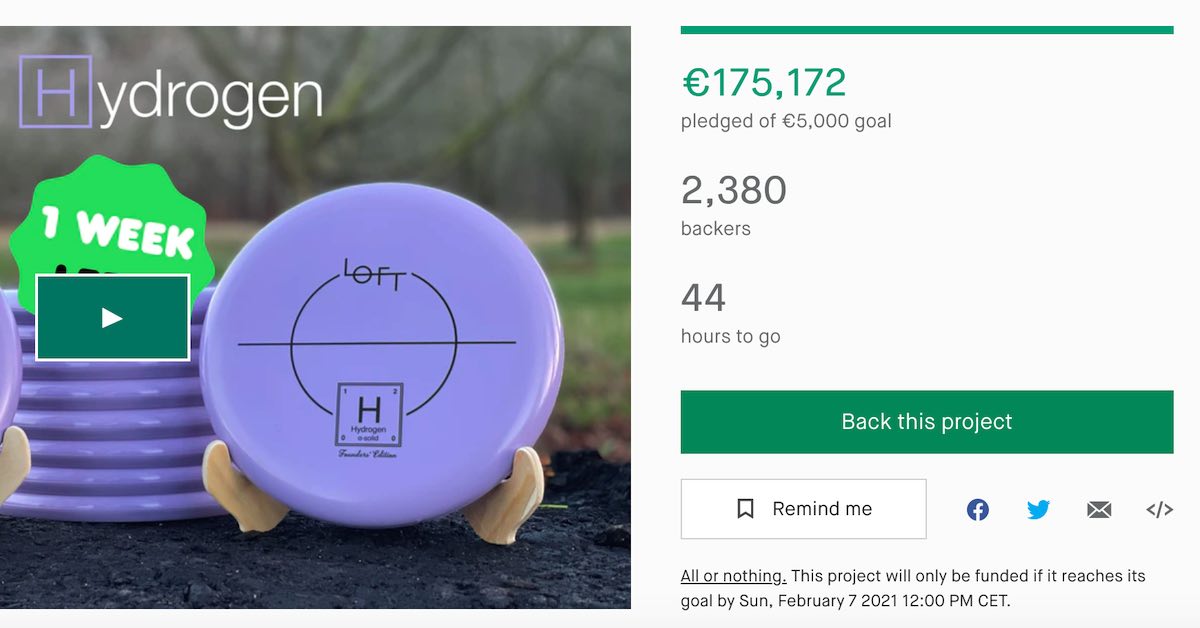
UDisc: Why do you think your Kickstarter campaign has convinced so many people to invest in your idea?
Sandahl: I think we did a really good job making the campaign great. Good pictures, very good video, and a great graphical setup all thanks to [fellow Løft team member] Kasper [Jakobsen]. I also think the product sells itself. When people hear about it, they need it.
Sørensen: But we also tried to include the things we've been most stoked about in developing this product – the flight paths, the simulations, the logic behind the logo and naming system. We tried to tell about everything we did so it's really thorough. Typically when someone releases a disc, all you know about it is something like, "Oh, it's a 12-speed driver that's fairly overstable," and you have to figure out the rest for yourself.
Sandahl: Also, we actually thought about starting this campaign already in November to get the funding earlier, but we read about how to do it, and it turned out it's better to start talking about the product a couple of months before you launch, get some hype, and then do it.
UDisc: In disc production, paying someone to create the mold is the most expensive part. Why'd you start the campaign before you'd paid for the mold?
Sørensen: When we did some research about making a Kickstarter, we found out you pretty much have to have your product finished before you start a campaign for it to be successful. So we prioritized all our savings into the mold and then we had a lot of other expenses we'll have to pay later on.
UDisc: How does it feel now seeing the success the campaign has had?
Sandahl: It's absolutely amazing to see so many people who believe in the same thing we do, who like what we've spent so much time developing and want to help us with making this a success, to make it last and be more than just a Kickstarter campaign. It's no secret that our ability to do this depends on how much money we can make from it, but I will say that if we'd raised even a tenth of what we have, we'd still do this as a hobby. That's why we had such a low funding goal because we wanted to see if there was some support. Even if there wasn't, I might've done it anyway because making my own discs...I think that's just awesome to do.
Sørensen: We really didn't expect anyone outside of Denmark to support this. Still, we considered doubling the goal to €10,000, but we ended up saying [chuckles], "Nah, that's too risky." Apparently we undershot quite a bit [laughs].
UDisc: What does the campaign's success mean for your team and business?
Sørensen: We all have full-time occupations, but we plan now to go full-time [with Løft] in half a year or something like that. We had imagined it would take at least at two years before we could do that.
Sandahl: I actually just quit my job. I work in finance and Danish customs, and I'm out of there in March.
Looking Ahead
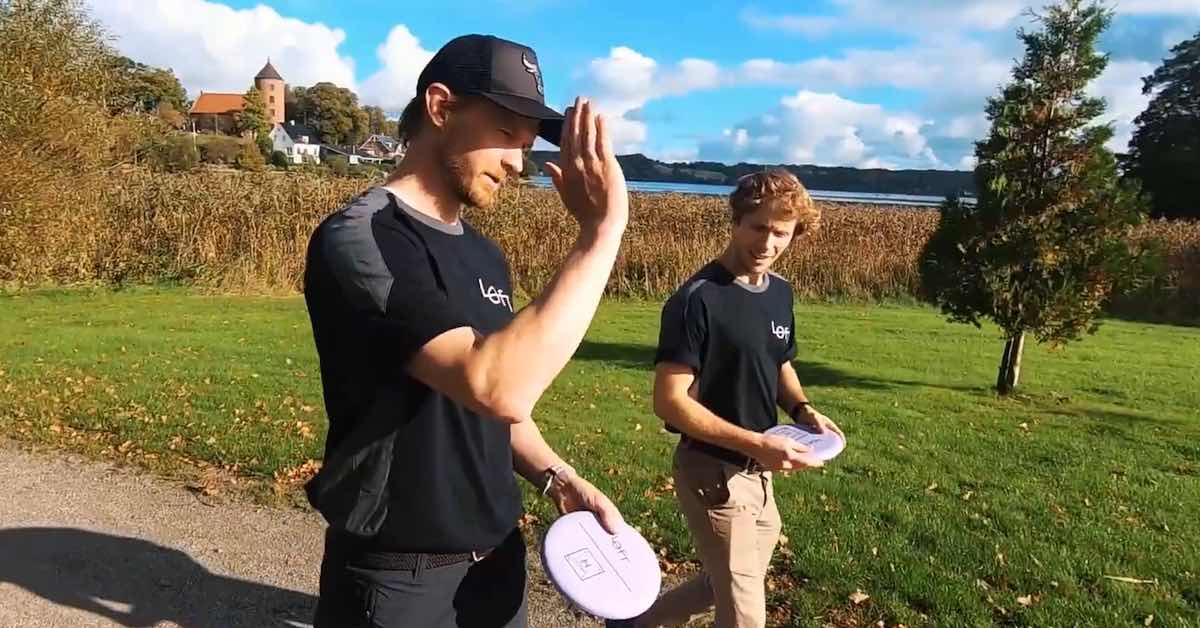
UDisc: Now that you've created such a high demand for your disc, what will it be like trying to meet the deadline you've set for sending them out?
Sandahl: That's a good question. Obviously, the more requests we get, the harder it will be. There's no question that we're going to be busy to make it in time [with all the orders].
Sørensen: Currently, everything is going according to plan but obviously with this large amount of orders – especially since we haven't dealt with orders before at all – we are aware there can be delays.
Sandahl: We can make it on time, but that's only if absolutely no problems occur.
UDisc: It could be that after this campaign people will associate you with straight discs. Do you think discs like the straight midrange or straight driver are physically possible?
Sørensen: Yes and no. We have some ideas about how to produce discs that fly straighter than is typical. But our general idea is that low speed discs are straighter, and that means high speed is less straight. We will never be able to make a driver fly as straight as the Hydrogen does. But people can look out for more regular discs where we take properties that are already popular and use some of the tools we have to optimize specific parameters because we want to make a full bag of just our discs, and for that we can't just have concept discs.
Sandahl: For the next couple of years, we plan to release three to five discs a year so hopefully in two years you can fill a bag with Løft discs.
The Kickstarter campaign for the Løft Hydrogen ends on Sunday, February 7, 2021.
